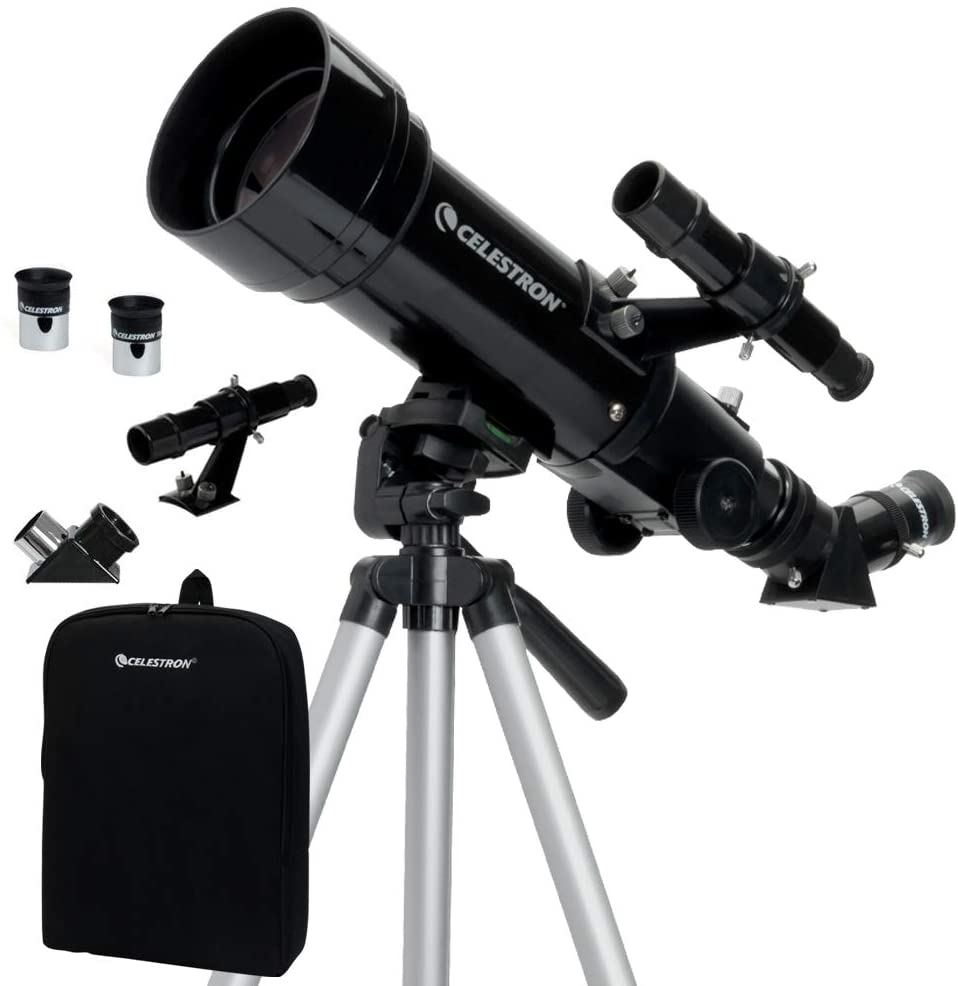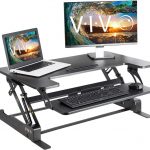Telescopes are one of the most widely used gadgets in astronomy. They allow astronomers to see things that they couldn’t otherwise, such as planets, stars, and galaxies. For many people, telescopes can be intimidating and confusing because there is so much information out there on the subject. That’s why we’re going to tell you everything you need to know about telescopes in this article!
Table of Contents
What is a Telescope?
The first thing you should know about what a telescope does is as follows: Telescopes are built around one single principle, which is light gathering and magnification. In other words, how much light can come in from an object (or space) and get focused on some piece of equipment such as an eyepiece or camera?
There are two main types of telescopes that work with this same concept — reflectors and refractors. Reflecting telescopes focus their collected energy through mirrors while refractive ones pass the gathered light through lenses before being magnified.
Telescopes use two lenses or mirrors to make distant objects appear closer and larger. The first lens, called an objective, gathers all the light that reaches it from an object in space; this is ‘spreading’ the light out into a flat image of what we’re looking at. Next, magnifying lens directs this entire image onto another detector (e.g., a photographic plate) which provides us with a detailed view of our subject.
Advancements in Telescope Technology
Over the years, telescopes have undergone significant advancements in technology, leading to enhanced capabilities and improved precision. Initially, telescopes relied on refracting lenses, which bend light to magnify images. However, the introduction of reflecting telescopes, which utilize mirrors to capture and reflect light, revolutionized astronomical observations. This innovation allowed for larger and more powerful telescopes, enabling scientists to explore the depths of space with greater clarity.
In the modern era, telescope design has seen remarkable progress. Advanced materials and construction techniques have resulted in lighter and more durable telescopes. The integration of computerized systems and adaptive optics has further refined telescope performance, compensating for atmospheric distortions and producing sharper images.
Benefits of Telescopes
Exploration of the Universe
One of the primary benefits of telescopes lies in their ability to enable us to study celestial bodies. With the aid of telescopes, astronomers can observe planets within our solar system, providing insights into their atmospheres, geology, and potential for supporting life. Moreover, telescopes allow us to gaze beyond our cosmic neighborhood and explore distant galaxies and nebulae, unraveling their composition, structure, and evolution. These observations have deepened our understanding of the universe and expanded our cosmic horizons.
Furthermore, telescopes have been instrumental in investigating one of the most enigmatic phenomena in the cosmos: black holes. By capturing and analyzing the radiation emitted from black hole interactions, astronomers have made significant strides in deciphering their nature, behavior, and profound gravitational influence. These findings have not only contributed to our scientific knowledge but have also sparked the imagination of both scientists and the general public.
Enhancing Scientific Knowledge
Telescopes serve as invaluable tools for gathering astronomical data that fuels scientific research. By collecting light and other forms of electromagnetic radiation from celestial objects, telescopes enable scientists to analyze and interpret the information encoded within.
Observational data obtained through telescopes provide empirical evidence that can either support or challenge existing theories. By comparing observations with theoretical predictions, astronomers can refine and expand their understanding of the cosmos, pushing the boundaries of scientific knowledge.
Inspiring Wonder and Curiosity
Telescopes have a remarkable ability to captivate our imagination and inspire a sense of wonder about the universe. Through the awe-inspiring images and discoveries they reveal, telescopes encourage a natural curiosity about the cosmos and our place within it. The breathtaking images of distant galaxies, colorful nebulae, and other celestial objects instill a sense of humility and ignite a desire to explore and understand the mysteries of the universe.
Beyond their scientific value, telescopes also play a significant role in fostering scientific literacy. By making astronomy more accessible and engaging, telescopes contribute to the popularization of science. They encourage people of all ages to learn about the cosmos, sparking an interest in astronomy and promoting a deeper appreciation for the wonders of the universe.
Practical Applications of Telescopes
While the primary purpose of telescopes is to explore the depths of space, they also have practical applications beyond astronomical research. Telescopes are used for satellite tracking and communication, allowing us to monitor and maintain communication with satellites orbiting the Earth. They play a crucial role in ensuring the smooth operations of global positioning systems (GPS), weather satellites, and various other satellite-based technologies.
Telescopes are also instrumental in monitoring space weather. By observing solar flares, coronal mass ejections, and other solar activities, telescopes provide valuable information that helps safeguard critical infrastructure such as power grids, communication networks, and satellite operations. Understanding and predicting space weather phenomena is essential for mitigating potential risks associated with space-based technologies.
Telescopes contribute to the identification and tracking of near-Earth objects (NEOs). These are asteroids and comets whose orbits bring them into close proximity to our planet. By detecting and characterizing NEOs, telescopes enable early warning systems that can help in the formulation of strategies to mitigate potential impact hazards and protect our planet.
4 Different Types of Telescopes
Would you like to buy a new telescope based on your tastes and preferences? Well, this is now the time to know the different types of telescopes prior to purchasing a new one for you.
It is a must to explore first how it differs from one another so that you will know how it is being used based on your purposes. To give you a hint about telescopes, then below are the different types of telescopes that you can find in the marketplace:
- Reflector telescope – This kind of telescope was invented by Isaac Newton, who is one of the most prominent scientists of all time. This telescope uses mirrors in reflecting light, which the device gathers, forming an image on the eyepiece. This type of telescope can be purchased at an affordable price only compared to the other types of telescopes out there since the mirrors can easily be produced and purchased in the market.
- Dobsonian telescope – This is a kind of reflector telescope that is quite large. It is recommendable to be used by newbies since it is easy to operate and utilize. Users may also opt to purchase this telescope if they want an affordable but high-quality type of binocular.
- Refractor telescope – This kind of telescope bends or refracts the light to create an image. There are several kinds of refractor telescopes that can be easily used and operated. The good thing about this telescope is that it only offers a low maintenance level, which makes a novice user comfortably use it for his/her projects.

The Celestron 70mm Travel Scope features high-quality, fully-coated glass optics, a potent 70mm objective lens, a lightweight frame, and a custom backpack to carry it all. Its quality is unmatched in its class and against competitors.
- Maksutov-Cassegrain telescope – This is a type of catadioptric telescope, which primarily means that it uses both mirrors and lenses just to create an image. It offers a curved lens situated at a front portion of a telescope tube and a spherical mirror on the back portion of the binocular.
If you think that you need a telescope to be used according to your purpose, it is necessary to choose a specific type of telescope suitable for you. There’s a wide array of selections of a telescope in the market; so, rest assured that you can pick the right one for you.
Common Questions about Telescopes
What to know before you buy a telescope?
Before picking a telescope, you might want to know the following factors:
- What is your budget?
- How big of a telescope do you need for viewing objects near or far, depending on what type of astronomy you’re interested in. (planets and stars are close while galaxies are farther)
- Do you prefer an altazimuth mount with up/down tilt motion or equatorial mounting which allows side-to-side movement as well?
What size telescope do I need to see the rings of Saturn?
This is a great question and one that can be answered very easily: The rings of Saturn are visible with any telescope. A small telescope with 25x zoom can view Saturn.
But the higher zoom the clearer we can view the planet. How much zoom is enough? The answer to this is not as easy, but you’ll want an instrument that has at least 500x magnification and should have the capability for higher magnifications. It’s also worth noting that telescopes come in many different shapes these days from reflectors (with mirrors) to refractors (with lenses). You may find more information about what type of telescope best suits your needs by doing some research online or talking with other astronomers!
Can I see Pluto with a telescope?
Yes, you can see Pluto with a telescope. But you’ll need a large aperture telescope!
The size of the telescope is not what will matter, but how powerful it is and if you have access to one that has good optics. A large number of telescopes come with magnification such as 20x or 30x which can be helpful for viewing distant objects in space, like Pluto.
However, these are not true optical magnifications because they do not take into account light loss from passing through the eyepiece lens itself before reaching your eye. So while this might make an object look brighter and bigger to your eye when using a scope than without it, there’s actually less detail in the image so don’t get too excited about seeing things clearer by looking at them farther away!



